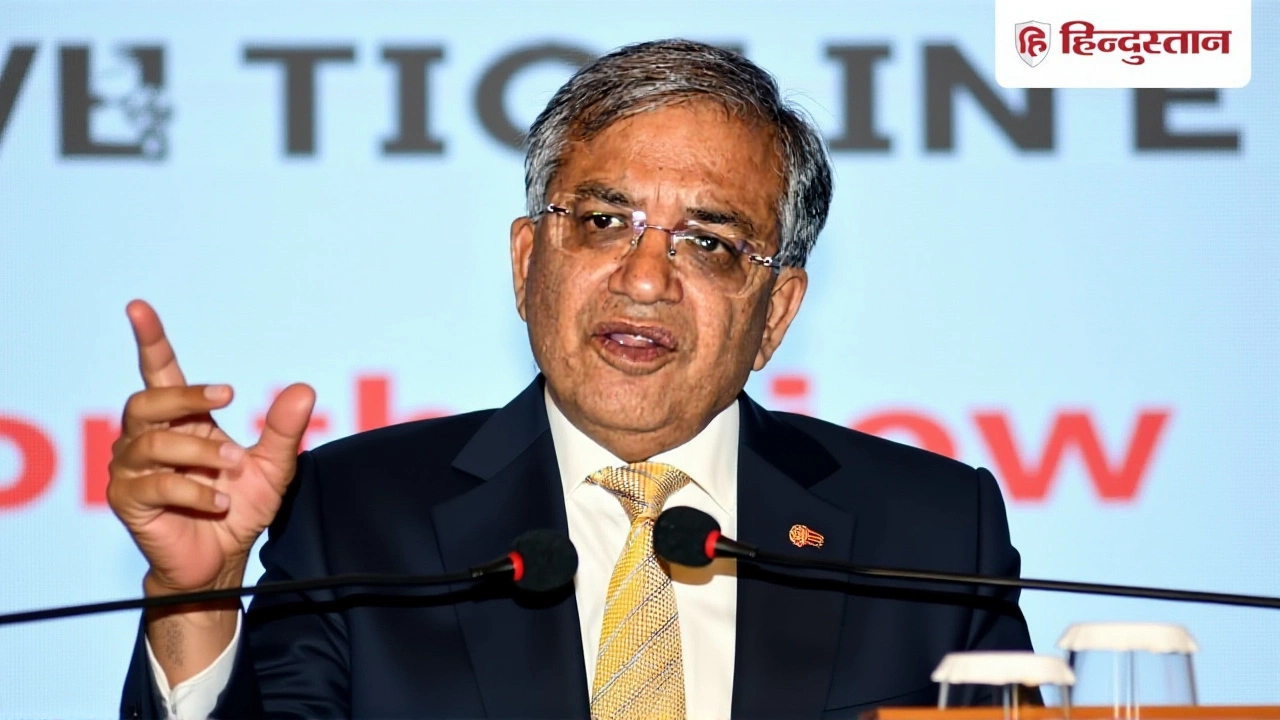Bihar 2025 Assembly Vote Set for Nov 6 & 11 – CEC Gyanesh Kumar Announces Two‑Phase Schedule
 Oct, 7 2025
Oct, 7 2025
When Gyanesh Kumar, Chief Election Commissioner of Election Commission of India, stepped up to the podium on October 6, 2025, he didn’t just read a timetable – he reset the rhythm of Bihar’s political calendar.
In a crisp press briefing held in Bihar at 4 p.m., Kumar announced that the 2025 Bihar Assembly electionsBihar would be conducted in just two phases – a first for the state.
Why the Two‑Phase Shift Matters
The decision cuts the traditional three‑phase format used in 2020, shaving a week off the process and compressing campaign windows. With 121 constituencies voting on and the remaining 122 on , parties now have to sprint rather than stroll through a three‑week marathon.
Election officials argue that fewer phases mean lower security costs and a tighter administrative grip. Critics, however, warn that a rushed schedule could strain logistics in remote districts, especially where polling stations still lack reliable electricity.
Context: The Numbers Behind the Vote
- Registered voters: 7.43 crore (approximately 74.3 million)
- Male voters: 3.92 crore
- Female voters: 3.50 crore
- Transgender voters: 1,725
- Seat composition: 203 general, 38 SC, 2 ST
These figures come from the commission’s September 30, 2025 roll‑out report, which also noted an uptick in voter registration among young adults aged 18‑24, a demographic that could swing close contests in the North‑East districts.
Immediate Fallout: Model Code of Conduct Takes Effect
As soon as the schedule was unveiled, the Model Code of Conduct (MCC) swooped in, barring incumbent officials from announcing new schemes or making policy pronouncements. The MCC’s activation is a standard move, but its timing has already rattled state ministries that were gearing up for a budget rollout in late October.
Political parties have raced to recalibrate their campaign calendars. The national ruling party, for instance, announced a string of micro‑rallies in the evening slots of November 5, hoping to capture last‑minute voter attention before the first phase. Meanwhile, opposition coalitions are locking in joint manifestos, a strategy that mirrors the 2015 “Grand Alliance” playbook.
Stakeholder Reactions
Rahul Singh, senior analyst at India Election Watch, said, “Two phases mean parties must be laser‑focused on ground‑level mobilization. Door‑to‑door canvassing will replace drawn‑out media blitzes.”
On the other side, Dr. Meera Patel, professor of political science at Patna University, warned, “Logistical bottlenecks in districts like Araria could disenfranchise voters if not addressed swiftly.”
Broader Implications for Indian Elections
This compressed schedule may set a precedent for other large states wrestling with election fatigue and security costs. If the Bihar model proves smooth, the commission could consider a similar two‑phase rollout for the upcoming Uttar Pradesh polls, which host over 12 crore voters.
Security agencies have already deployed additional forces along the Ganga corridor, citing concerns over communal flashpoints. The heightened presence aims to reassure both voters and candidates amid fears that a tighter timeline could leave gaps in policing.
What Comes Next?
Counting will commence on , with results projected to be declared the same day. Early indicators suggest that the final phase’s turnout could be pivotal; historically, the second phase in Bihar has seen a 3‑4 percentage‑point swing toward the opposition.
Both major alliances are now busy finalising candidate lists. Rumours swirl that the ruling party may field a heavyweight former minister in the Patna Sahib constituency – a move that could reshape the battle for the capital’s political heartland.
Historical Snapshot: How Bihar’s Election Timing Evolved
Since the state’s first assembly election in 1952, the voting calendar has mirrored the nation’s logistical capabilities. The three‑phase design introduced in 2005 was intended to manage security in conflict‑prone areas. The 2025 two‑phase plan, therefore, marks a deliberate pivot toward efficiency, reflecting confidence in digital voter‑verification tools rolled out in the 2022 voter‑ID digitisation drive.
In the past decade, Bihar’s voter‑turnout percentages have hovered around 57 percent, a figure that the commission hopes to nudge higher by shortening the campaign fatigue period.
Frequently Asked Questions
How will the two‑phase schedule affect voter turnout?
A tighter timeline may boost enthusiasm among first‑time voters who prefer concise campaigning. However, districts with limited transport infrastructure could see marginal drops if polling stations are not adequately staffed.
What is the Model Code of Conduct and why does it matter now?
The MCC is a set of guidelines that freeze governmental announcements once elections are announced, ensuring a level playing field. Its activation means any new welfare schemes announced by the state government will be postponed until after the results.
Which parties are expected to form alliances ahead of the election?
Analysts anticipate that the incumbent National Democratic Alliance will try to retain its regional partners, while the opposition Grand Alliance may expand by courting smaller caste‑based parties in the western districts.
What security measures are being taken for the two‑phase vote?
The Election Commission has deployed an extra 25,000 central paramilitary personnel, installed additional CCTV units in high‑risk booths, and coordinated with state police for real‑time monitoring via a new command centre in Patna.
When will the final results be announced?
Counting is slated for November 14, 2025, with the complete declaration of all 243 seats expected by evening, subject to any legal challenges or recounts.
